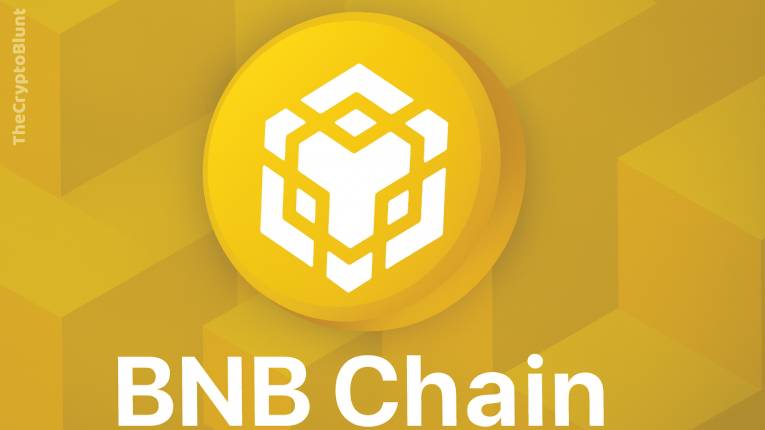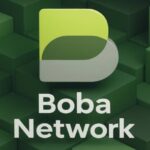When I first encountered the vast and rapidly expanding world of blockchain, I found myself drawn to networks that prioritized speed, affordability, and a rich ecosystem of applications. While Ethereum was the undisputed pioneer, its high transaction fees and occasional congestion made exploring decentralized applications (dApps) costly for beginners. That’s when I discovered the BNB Chain ecosystem, formerly known as Binance Smart Chain (BSC), a powerful and versatile blockchain network that quickly became a popular destination for users and developers alike due to its efficiency and vast array of decentralized applications.
For beginners, the idea of a blockchain network being an “ecosystem” might be a new concept. You might wonder, “How is it different from Bitcoin?” or “Why would I use this instead of another blockchain?” This comprehensive guide is designed to answer those questions and more. We’ll demystify the core concepts of cryptocurrency, blockchain, and decentralization, explain how the BNB Chain ecosystem works, delve into its unique features and components, and directly tackle common misconceptions about crypto, empowering you with accurate and trustworthy knowledge to confidently navigate this dynamic space.
Let’s embark on this journey to understand the BNB Chain ecosystem – its origins, its unique dual-chain architecture, its utility token BNB, and its ambitious vision for driving mass adoption of Web3.
Your Crypto Compass: Navigating the Core Concepts (Foundations for Understanding the BNB Chain Ecosystem)
Before we dive into the specifics of the BNB Chain ecosystem, let’s establish a clear understanding of the fundamental concepts that underpin all blockchain technology. These are the building blocks you’ll encounter repeatedly in your crypto journey.
- Cryptocurrency: At its most basic, cryptocurrency is digital money secured by advanced cryptographic techniques. Unlike money in your traditional bank account, which is managed by a central bank or government, cryptocurrencies often operate on a decentralized network. This means no single entity holds all the power; instead, a vast network of computers works together to verify and record transactions, promoting transparency and security without intermediaries. BNB (formerly Binance Coin) is the native cryptocurrency of the BNB Chain ecosystem.
- Blockchain: Imagine a digital ledger that’s not stored in one central location but is distributed across thousands of computers globally, constantly growing. Every transaction or piece of data is bundled into a “block,” and once complete, it’s cryptographically linked (or “chained”) to the previous block, forming an unbroken, chronological record. This ingenious structure ensures transparency, security, and immutability – once data is recorded on the blockchain, it’s nearly impossible to alter or remove, making it highly resistant to fraud. The BNB Chain ecosystem consists of multiple interconnected blockchains.
- Decentralization: This is the foundational philosophy of blockchain technology. It means that control and power are spread out among many participants in a network, rather than being concentrated in the hands of a single, central authority. This distribution makes the network more resilient to censorship, manipulation, and single points of failure. While the BNB Chain initially had a more centralized feel due to its association with Binance, it has made significant strides towards greater decentralization through its validator set and community governance.
- Consensus Mechanism (Proof of Staked Authority – PoSA): How do all these distributed computers agree on the correct order of transactions and validate new blocks? They use a “consensus mechanism.” The BNB Smart Chain (BSC) primarily uses Proof of Staked Authority (PoSA), a hybrid approach. In PoSA, a limited number of “validators” (typically 21, elected by BNB stakers) are responsible for creating new blocks. These validators are chosen based on their stake (amount of BNB held) and their reputation/identity. This allows for extremely high transaction speeds and efficiency while maintaining a level of decentralization through the staking and election process.
- Validators: In Proof-of-Stake or Proof-of-Authority systems, “validators” are entities that propose and verify new blocks of transactions on the blockchain. They typically “stake” (lock up) a certain amount of the network’s native cryptocurrency as collateral, giving them an incentive to act honestly. On the BNB Chain, validators play a crucial role in maintaining its speed and security, being elected by BNB holders.
- Smart Contracts: Think of these as self-executing digital agreements stored directly on a blockchain. Unlike traditional contracts, which require intermediaries (like lawyers or banks) to enforce them, smart contracts automatically execute their terms when predefined conditions are met. They are crucial for building complex decentralized applications (dApps) like lending platforms, decentralized exchanges, and NFTs. The BNB Smart Chain fully supports smart contracts.
- EVM (Ethereum Virtual Machine) Compatibility: The EVM is the runtime environment that executes smart contracts on the Ethereum blockchain. A blockchain that is “EVM-compatible” means that smart contracts and decentralized applications built for Ethereum can easily run on it with minimal or no modifications. This is a huge advantage for developers, allowing them to leverage existing tools and a vast ecosystem of applications. The BNB Smart Chain boasts EVM compatibility.
- Gas Fees: When you perform an action on a blockchain, like sending tokens, interacting with a smart contract, or making a trade on a decentralized exchange (DEX), you pay a small transaction fee known as “gas.” This fee compensates the network’s validators for processing your transaction and prevents spam. On the BNB Smart Chain, gas fees are paid in BNB.
What is BNB Chain? A High-Performance Web3 Powerhouse
The BNB Chain is not just a single blockchain; it’s a multi-chain ecosystem developed by Binance, the world’s largest cryptocurrency exchange. It began its journey as the Binance Chain (launched in 2019), primarily designed for fast decentralized trading, and then evolved significantly with the launch of Binance Smart Chain (BSC) in 2020, which focused on smart contract functionality. In early 2022, these two chains, along with a broader vision for Web3, were rebranded under the umbrella of BNB Chain.
The Evolution of BNB Chain: From Exchange to Ecosystem
- Binance Chain (BC) – The Foundation (2019): Initially launched to provide a high-performance blockchain for decentralized trading, particularly for Binance DEX. It prioritized speed and transaction throughput but had limited smart contract capabilities.
- Binance Smart Chain (BSC) – The Game Changer (2020): Launched in parallel to Binance Chain, BSC was designed to be EVM-compatible and support smart contracts. It quickly gained popularity due to its low transaction fees and fast block times, offering a viable alternative to the often-congested and expensive Ethereum network. Critically, it could communicate with Binance Chain, allowing for seamless asset transfers.
- BNB Chain – The Unified Ecosystem (2022 onwards): The rebranding to BNB Chain signified a broader ambition beyond just “Binance.” It unified the two chains into a single ecosystem with two core components:
- BNB Beacon Chain (formerly Binance Chain): Still the governance layer of the BNB Chain, handling staking, voting, and cross-chain transfers.
- BNB Smart Chain (BSC – formerly Binance Smart Chain): The execution layer, where most dApps reside, supporting smart contracts and providing high transaction capacity.
- BNB Greenfield: A decentralized storage network, a newer addition aimed at Web3 data ownership and management.
- opBNB: A high-performance Layer 2 scaling solution built on the OP Stack, designed to further reduce costs and increase throughput for dApps.
This multi-chain approach allows the BNB Chain ecosystem to offer specialized functionalities on different layers while remaining interconnected.
BNB Chain’s Core Philosophy: Mass Adoption, Scalability, and Affordability
BNB Chain’s strategy is built on a few key pillars:
- Mass Adoption: Lowering the barrier to entry for users by offering low transaction fees and fast confirmations, making dApps accessible to a wider audience.
- Scalability: Designing the network to handle a large volume of transactions and users, preventing congestion and ensuring a smooth user experience.
- EVM Compatibility: Attracting developers by providing an environment that is familiar to those already building on Ethereum, allowing for easy migration and development of new dApps.
- Ecosystem Growth: Actively supporting and fostering a vibrant ecosystem of decentralized applications across DeFi, NFTs, GameFi, and more.
- Decentralization Progress: Continuously working towards greater decentralization of its validator set and governance.
- Innovation: Exploring new frontiers with projects like BNB Greenfield (decentralized storage) and opBNB (Layer 2 scaling) to meet the evolving needs of Web3.
Key Technical Aspects of BNB Chain (Specifically BNB Smart Chain – BSC)
- Consensus Mechanism (Proof of Staked Authority – PoSA): BSC uses PoSA, where 21 active validators are selected based on the amount of BNB they have staked and their election by BNB holders. This allows for rapid block finality (around 3 seconds) and high transaction throughput.
- High Transaction Speed (TPS) & Low Fees: The PoSA consensus enables BSC to achieve impressive transaction throughput and significantly lower transaction fees compared to older, more congested blockchains like Ethereum (before its move to PoS). Gas fees are paid in BNB.
- EVM Compatibility: BNB Smart Chain is fully compatible with the Ethereum Virtual Machine (EVM). This means that smart contracts and decentralized applications built for Ethereum can easily run on BSC with minimal or no modifications. This has been a huge factor in its rapid growth.
- BEP-20 Token Standard: Similar to Ethereum’s ERC-20, BNB Smart Chain has its own BEP-20 token standard for fungible tokens, and BEP-721/BEP-1155 for Non-Fungible Tokens (NFTs).
- Cross-Chain Communication: The BNB Beacon Chain and BNB Smart Chain are designed to communicate seamlessly, allowing users to transfer assets (like BNB) between the two chains.
- Decentralized Applications (dApps): BSC provides a robust environment for a vast array of dApps due to its smart contract capabilities, speed, and low fees.
Consider adding an infographic here: “The BNB Chain Ecosystem: Beacon Chain, Smart Chain, Greenfield, opBNB & BNB.”
The BNB Chain Ecosystem: A Dynamic and Diverse Web3 Landscape
The BNB Chain ecosystem is a vast and dynamic network of interconnected components, all powered by the BNB token, designed to provide a comprehensive Web3 experience. It offers a wide range of services and applications, from decentralized finance to gaming and NFTs.
Core Components of the BNB Chain Ecosystem:
- BNB (Build and Build) Token:
- Native Utility Token: BNB is the heart of the entire BNB Chain ecosystem. It has multiple utilities:
- Gas Fees: Paying for transaction fees on both BNB Smart Chain and BNB Beacon Chain.
- Staking: BNB holders can stake their tokens on BNB Beacon Chain to participate in the PoSA consensus mechanism by voting for validators and earning staking rewards.
- Governance: BNB holders may have voting rights in future decentralized governance models for the BNB Chain.
- Binance Exchange Benefits: BNB also provides trading fee discounts, exclusive access to token sales (Launchpad), and other perks on the centralized Binance exchange, which is closely associated with the BNB Chain.
- Burning Mechanism: Binance regularly “burns” (permanently removes from circulation) a portion of BNB, which can contribute to its scarcity and potential value.
- Native Utility Token: BNB is the heart of the entire BNB Chain ecosystem. It has multiple utilities:
- BNB Smart Chain (BSC):
- Smart Contract Platform: The primary network for decentralized applications. Its EVM compatibility, high transaction speed, and low fees have made it a popular choice for developers.
- Vast dApp Ecosystem: Hosts thousands of dApps, including:
- Decentralized Exchanges (DEXs): Platforms like PancakeSwap, which enable users to swap tokens directly from their wallets without intermediaries.
- Lending & Borrowing Protocols: DeFi platforms where users can lend out their crypto assets to earn interest or borrow by providing collateral.
- Yield Farming & Staking Platforms: Opportunities for users to earn rewards by providing liquidity or staking their tokens.
- NFT Marketplaces: Platforms for creating, buying, and selling Non-Fungible Tokens, including digital art, collectibles, and gaming assets.
- Blockchain Games (GameFi): Play-to-earn games that integrate BEP-20 tokens and NFTs for in-game economies, asset ownership, and rewards.
- Metaverse Projects: Virtual worlds and immersive experiences being built on BSC.
- Wallets: Wallets like MetaMask, Trust Wallet, and Binance Wallet are widely used to interact with BSC.
- BNB Beacon Chain (BC):
- Governance and Staking Layer: Handles the staking of BNB and the election of validators for BSC. It also facilitates cross-chain asset transfers.
- Fast Transaction Settlement: Designed for rapid token transfers.
- BNB Greenfield (Newer Component):
- Decentralized Storage Network: A decentralized storage solution built specifically for Web3, allowing users to own and control their data. It aims to provide scalable, secure, and permissionless storage for dApps.
- opBNB (Newer Component):
- Layer 2 Scaling Solution: A high-performance, low-cost Layer 2 network compatible with the EVM, built using the OP Stack. It processes transactions off the main BSC chain to further reduce gas fees and increase transaction throughput, before settling them on BSC. This helps scale the entire ecosystem.
- Binance Labs & Incubation Programs: Binance’s venture capital arm and various incubation programs actively invest in and support promising projects building on the BNB Chain, fostering innovation and growth.
- Developer Tools & Documentation: Comprehensive resources and tools for developers, including SDKs, APIs, and detailed documentation, make it easier to build and deploy dApps on BNB Chain.
- Community Support: A massive and active global community of users, developers, and enthusiasts who contribute to the ecosystem’s growth, provide support, and participate in governance discussions.
The “Why”: Real-World Applications and Benefits of the BNB Chain Ecosystem
The BNB Chain ecosystem, with its unique architecture and focus on scalability and affordability, offers compelling advantages that have driven its widespread adoption.
For Everyday Users & Crypto Enthusiasts: Accessibility, Affordability, and Diverse Opportunities
- Low Transaction Fees: This is arguably one of the biggest draws. Interacting with dApps on BNB Smart Chain is significantly cheaper than on some other major blockchains, making it economically viable for users to explore various DeFi protocols, buy NFTs, or play blockchain games without worrying about prohibitive gas costs.
- Fast Transactions: Quick block times mean transactions are confirmed rapidly, providing a smooth and responsive user experience, especially important for gaming or active trading.
- Vast Array of dApps: The sheer volume and diversity of decentralized applications on BNB Smart Chain mean users have a wide range of options for DeFi (swapping, lending, borrowing, yield farming), NFTs, GameFi, and more.
- Accessibility: For users already familiar with Binance, BNB Chain offers a natural extension into the Web3 world, with seamless integration between the centralized exchange and the decentralized ecosystem.
- Passive Income Opportunities: Users can stake their BNB to earn rewards, participate in yield farming on various DeFi protocols, or lend out their assets, creating multiple avenues for passive income generation.
- Educational Resources: Given its association with Binance, there are abundant educational resources available to help beginners understand and navigate the BNB Chain ecosystem.
For Developers and Businesses: Scalability, Familiarity, and Robust Support
- EVM Compatibility – Developer Familiarity: Developers can leverage their existing knowledge of Ethereum’s ecosystem (Solidity, Web3.js, Truffle, Hardhat) to build dApps on BNB Smart Chain, significantly reducing development time and costs. This has made it a preferred choice for many projects looking for a high-performance EVM-compatible chain.
- High Performance for Enterprise Solutions: The BNB Chain’s speed and low fees make it suitable for enterprise-grade applications requiring high transaction throughput, such as supply chain management, loyalty programs, or digital identity solutions. opBNB further enhances this capability for extreme scalability.
- Strong Funding and Incubation: Binance Labs and various grant programs provide financial and strategic support for promising projects, accelerating their development and market entry. This creates a fertile ground for innovation.
- Large User Base: Building on BNB Chain provides immediate access to a massive and active user base, making user acquisition and adoption potentially faster for new projects.
- Comprehensive Developer Tools: Extensive documentation, SDKs, and a supportive developer community make it easier to build, test, and deploy applications.
- New Revenue Streams: The ability to issue BEP-20 tokens, create NFTs, and build DeFi protocols on a high-performance chain opens up new revenue streams and business models for various industries, including entertainment, gaming, and traditional finance looking to enter Web3.
For the Broader Web3 Ecosystem: Driving Mass Adoption and Innovation
- Bridging Centralized and Decentralized Worlds: BNB Chain acts as a crucial bridge between the centralized cryptocurrency exchange world (Binance) and the decentralized Web3 ecosystem, helping onboard millions of users into blockchain technology.
- Model for Scalability: It demonstrates how a high-performance, EVM-compatible blockchain can achieve significant scale for real-world applications, offering valuable insights for other blockchain projects.
- Innovation in Decentralized Storage (Greenfield): BNB Greenfield’s focus on decentralized data ownership and storage addresses a critical missing piece in the Web3 puzzle, complementing existing blockchain capabilities.
- Layer 2 Advancement (opBNB): The introduction of opBNB showcases a commitment to continuous scaling, ensuring the ecosystem can handle future growth and demand without compromising user experience.
Dispelling the Myths: Addressing Common Crypto Misconceptions (and BNB Chain’s Context)
The rapid growth and innovative nature of the cryptocurrency world often lead to misunderstandings and persistent myths. Let’s tackle some of the most common ones, highlighting how the BNB Chain’s design and purpose provide clear counterarguments.
- “Cryptocurrency is only for criminals and illicit activities.”
- Reality: This is a pervasive but largely inaccurate myth. While any financial instrument can be misused, public blockchains like BNB Smart Chain are inherently transparent. Every transaction is recorded on a publicly accessible and immutable ledger, making illicit activities more traceable than traditional cash transactions. Law enforcement agencies globally are increasingly sophisticated at utilizing blockchain analytics tools to track illicit funds.
- Context for BNB Chain: While BNB Chain itself is a decentralized network, its close association with Binance, a highly regulated centralized exchange, means that a significant portion of its user base originates from an environment with strict Know Your Customer (KYC) and Anti-Money Laundering (AML) procedures. For transactions on the BNB Smart Chain itself, the transparency of the blockchain means that any illicit activity leaves a permanent, traceable record. Binance and the broader BNB Chain community actively cooperate with authorities to combat illicit activities, demonstrating its commitment to legitimate use.
- Trustworthiness Principle: “Just as traditional currencies and banking systems can be misused, so too can digital assets. However, the fundamental transparency and immutability of public blockchains like BNB Smart Chain mean that criminal activity on them often leaves a permanent, traceable record, making it more identifiable than in traditional cash dealings. The BNB Chain ecosystem, in partnership with entities like Binance, is committed to providing a robust and secure framework for legitimate, decentralized applications, demonstrating how cryptocurrencies are part of a legitimate and evolving digital economy. We are committed to providing transparent education to show how these technologies can benefit everyone.”
- “Crypto is a scam/Ponzi scheme.”
- Reality: Sadly, the crypto space has indeed seen its share of fraudulent projects, “rug pulls,” and outright scams. However, it is crucial to distinguish between illegitimate schemes and genuine blockchain technology that offers real innovation and utility. A legitimate project solves a real problem, has clear utility for its native tokens, and a sustainable economic model driven by usage, not just by attracting new investors. The open-source nature of many blockchain projects allows for public scrutiny.
- Context for BNB Chain: The BNB Chain is a robust, operational blockchain network with a vast and diverse ecosystem of dApps and projects. Its native token, BNB, has clear utility for gas fees, staking, and governance across the ecosystem, in addition to benefits within the Binance centralized exchange. Its value is driven by this utility and the demand for its fast, low-cost blockchain services. The BNB Chain team and its associated entities actively work to identify and warn users about fraudulent projects attempting to exploit the ecosystem. While individual projects built on any blockchain can be scams, the BNB Chain itself is a legitimate technological infrastructure.
- Authoritativeness Tip: “When evaluating any crypto project, look beyond promises of guaranteed, unrealistic returns. Does it have a real product or service that solves a problem? Is there a credible, often open-source, development team? What is its track record? For the BNB Chain, its long operational history, its vibrant ecosystem of functional applications, and the clear utility of the BNB token within its network clearly demonstrate its legitimacy as a technological infrastructure. Always refer to official documentation, technical audits, and credible independent reviews to understand fundamental mechanics and security guarantees. A project’s longevity, active development, and a broad range of dApps are strong indicators of a legitimate ecosystem.”
- “Crypto is bad for the environment.”
- Reality: This misconception primarily stems from the energy consumption of older “Proof-of-Work” (PoW) blockchains like Bitcoin. However, the blockchain industry has rapidly evolved towards significantly more energy-efficient solutions, and the vast majority of new projects and upgrades utilize these greener technologies.
- Context for BNB Chain: The BNB Smart Chain (BSC) utilizes Proof of Staked Authority (PoSA), which is significantly more energy-efficient than PoW. Unlike PoW, which requires vast computational power for “mining,” PoSA relies on elected validators who secure the network by staking BNB. This process consumes dramatically less energy, as it doesn’t involve complex computational puzzles. Therefore, transacting or using the BNB Chain network has a very low environmental footprint compared to energy-intensive PoW chains.
- Experience Insight: “When I first encountered crypto, the headlines about energy consumption were a major concern, and rightly so for early blockchain technologies. However, it’s crucial to understand that not all blockchains are created equal in terms of energy use. The BNB Chain, by leveraging the energy-efficient Proof of Staked Authority consensus, operates with a drastically reduced environmental impact. The blanket statement ‘crypto is bad for the environment’ simply isn’t accurate across the board, especially for modern, high-performance PoSA networks like the BNB Chain.”
- “Crypto will replace all traditional money.”
- Reality: While cryptocurrencies and platforms like the BNB Chain offer significant innovations and efficiencies, the idea that they will completely replace all traditional fiat money in the near future is highly unlikely and not the primary goal of most major blockchain projects. Instead, they are more likely to coexist and integrate with traditional financial systems, offering alternative or complementary solutions. Governments and central banks are also exploring their own digital currencies (CBDCs), which suggests integration rather than wholesale replacement.
- Context for BNB Chain: The BNB Chain ecosystem focuses on expanding the utility of digital assets and decentralized applications. While it enables digital payments and offers decentralized financial services, it also interacts heavily with traditional finance through Binance’s centralized exchange, which provides fiat on-ramps and off-ramps. BNB Chain aims to be a foundational layer for the next generation of the internet (Web3), enhancing existing digital services and creating new ones, rather than simply replacing all existing financial infrastructure. It’s about providing choice, efficiency, and new possibilities.
Getting Started: A Beginner’s Perspective on Acquiring & Using the BNB Chain Ecosystem
If the BNB Chain’s speed, affordability, and diverse ecosystem appeal to you, you’re probably eager to learn how to acquire BNB and interact with its applications. This information is purely for educational purposes and should not be considered financial, investment, or legal advice. Always remember that security and due diligence are paramount in the crypto world.
- Understanding What You’ll Need:
- Cryptocurrency Exchange (CEX): To initially acquire BNB. Binance is the most direct way, but other exchanges also list BNB.
- A Compatible Crypto Wallet: You’ll need a “self-custodial” wallet where you control your private keys/seed phrase, and which supports the BNB Smart Chain (BSC) network.
- MetaMask: A very popular browser extension wallet. You will need to add the BNB Smart Chain as a custom network to it.
- Trust Wallet: A popular mobile wallet that natively supports BSC.
- Binance Wallet (Wallet Connect compatible): Binance’s own self-custodial wallet.
- Hardware Wallets (e.g., Ledger, Trezor, Cypherock X1): For the highest level of security, these physical devices store your private keys offline. They widely support BSC.
- Acquiring BNB Tokens:
- 1. On Binance Exchange (Most Direct):
- Sign Up and Complete KYC: This is a mandatory process for all regulated exchanges. You will need to provide national ID and complete verification steps.
- Deposit Fiat Currency (e.g., INR) or another Cryptocurrency: Fund your Binance account via bank transfer, UPI, or other approved methods available in India. Alternatively, you can deposit other cryptocurrencies like USDT or BTC.
- Buy BNB: Navigate to the trading section. Look for trading pairs like BNB/INR, BNB/USDT, or other available pairs. Enter the amount of BNB you wish to buy and execute your order.
- Withdraw to Your Self-Custodial Wallet (Highly Recommended): Once you’ve acquired BNB, you can choose to leave it on the exchange (convenient for trading) or withdraw it to your own self-custodial wallet for true ownership and dApp interaction. When withdrawing, ensure you select the BNB Smart Chain (BSC) network (BEP-20) for interacting with dApps. If you choose the BNB Beacon Chain (BEP-2), it’s mainly for staking/governance or if a specific dApp uses it.
- 2. On Other Centralized Exchanges:
- BNB is listed on many other international exchanges. Follow their KYC procedures, deposit funds (fiat or crypto), and buy BNB in available trading pairs.
- Crucial: When withdrawing BNB from any exchange, always ensure you select the BNB Smart Chain (BSC) network (BEP-20) if you intend to use it for dApps and low-cost transactions.
- 1. On Binance Exchange (Most Direct):
- Connecting Your Wallet to BNB Smart Chain (Crucial Step!):
- For your EVM-compatible wallet (e.g., MetaMask) to interact with dApps on BNB Smart Chain, you need to add BSC as a custom network. Wallets like Trust Wallet or Binance Wallet often have BSC natively supported.
- Official Instructions: Always get the most up-to-date network details (RPC URL, Chain ID, Currency Symbol) from the official BNB Chain documentation (e.g., docs.bnbchain.org) or trusted sources like Chainlist.org.
- Steps (General for MetaMask):
- Open MetaMask.
- Click on the network dropdown (usually “Ethereum Mainnet”).
- Select “Add network” or “Custom RPC.”
- Enter the BNB Smart Chain network details (verify these from official sources, as they can change):
- Network Name: BNB Smart Chain (or Smart Chain)
- New RPC URL: https://bsc-dataseed.bnbchain.org (or another official RPC from BNB Chain docs)
- Chain ID: 56
- Currency Symbol: BNB
- Block Explorer URL (Optional): https://bscscan.com
- Save the network.
- Switch to the “BNB Smart Chain” network in your wallet when you want to interact with dApps on BSC.
- Storing Your Tokens on BNB Smart Chain:
- Once your BNB and other BEP-20 tokens are on the BNB Smart Chain, they will appear in your EVM-compatible wallet when your wallet is specifically connected to the “BNB Smart Chain” network.
- Using the BNB Chain Ecosystem (dApp Interaction and Beyond):
- 1. Explore dApps: Visit the official BNB Chain website (bnbchain.org), DappRadar, or DeFi Llama to discover decentralized applications built on BNB Smart Chain (e.g., PancakeSwap, Venus Protocol, GameFi projects, NFT marketplaces).
- 2. Connect Your Wallet: On the dApp’s website, click “Connect Wallet” and select your preferred wallet (e.g., MetaMask, Trust Wallet, WalletConnect). Ensure your wallet is connected to the “BNB Smart Chain” network.
- 3. Perform Actions:
- Swapping Tokens (on a DEX): Use decentralized exchanges like PancakeSwap to swap various BEP-20 tokens.
- Participate in DeFi: Engage in lending, borrowing, yield farming, or staking activities on BNB Chain-based DeFi protocols.
- Buy/Sell NFTs: Explore NFT marketplaces built on BNB Smart Chain, supporting artists and collectors.
- Play Blockchain Games: Enjoy GameFi projects that integrate BNB or BEP-20 tokens for in-game assets and rewards.
- Explore BNB Greenfield: For developers and users interested in decentralized storage solutions, learn how to interact with BNB Greenfield to store and manage data.
- Use opBNB: For extremely high-volume or very low-cost transactions, explore dApps or bridge assets to opBNB.
- 4. Pay for Gas Fees with BNB: All transactions you perform on the BNB Smart Chain network will incur gas fees. These fees are exclusively paid in BNB tokens. Always ensure you have a small amount of BNB in your wallet on the BNB Smart Chain to cover these operational costs.
- 5. Engage with the Community: Join official BNB Chain social media channels (Twitter, Telegram, Discord), forums, and local meetups to stay updated and connect with other users and developers.
The Road Ahead: The Future of the BNB Chain Ecosystem
The BNB Chain is committed to its vision of being a leading force in Web3, driving mass adoption and continuous innovation. Its future promises sustained growth and strategic advancements:
- Further Decentralization: Ongoing efforts to expand the validator set and strengthen community governance to make the network even more robust and decentralized.
- Enhanced Scaling: Continued development and adoption of Layer 2 solutions like opBNB to handle exponentially more transactions at even lower costs, supporting mainstream applications.
- Decentralized Storage: Significant focus on building out BNB Greenfield to provide robust decentralized data solutions, crucial for a truly decentralized internet.
- Interoperability: Continued development of bridges and integrations with other major blockchain networks will make the BNB Chain a more interconnected part of the global Web3 landscape.
- Developer Support & Innovation: Sustained investment in developer tools, grants, and incubation programs to attract and support the next generation of Web3 builders.
- Real-World Asset Tokenization: Exploring new avenues for tokenizing real-world assets on BNB Chain, bridging traditional finance with decentralized opportunities.
- Community Engagement: Fostering a vibrant and active global community that contributes to the ecosystem’s growth, security, and innovation.
In conclusion, the BNB Chain ecosystem stands as a powerful example of a high-performance, affordable, and incredibly diverse blockchain network. By leveraging its unique multi-chain architecture, its utility token BNB, and its commitment to scalability and developer-friendliness, it has rapidly become a go-to destination for millions of users and thousands of decentralized applications. Understanding its core components, its benefits, and how to get started empowers you to confidently explore the vast opportunities that the BNB Chain offers in the evolving landscape of Web3. Remember to always prioritize security and continue your learning journey to explore the exciting possibilities that this dynamic ecosystem presents.
















